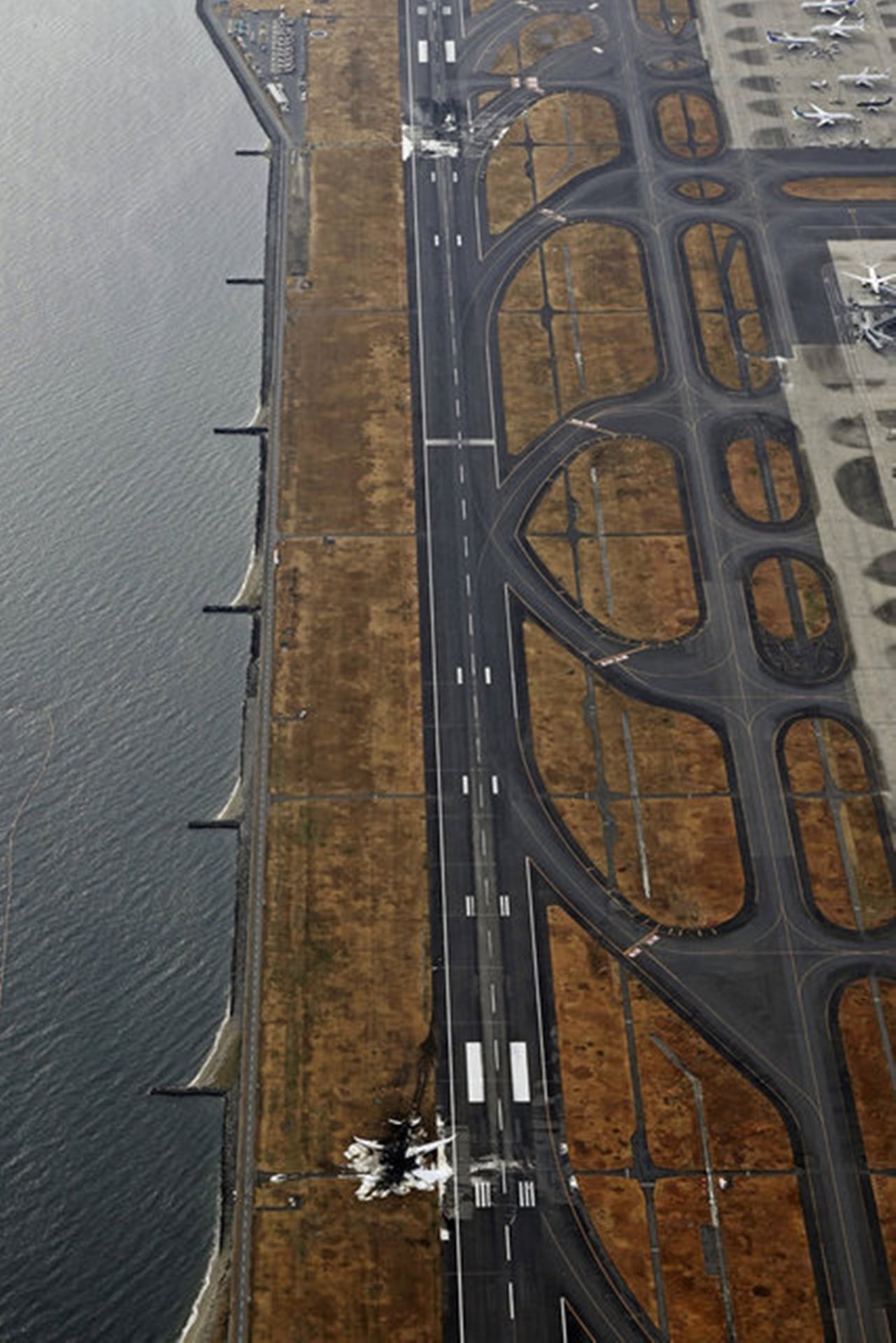


Japan's Ministry of Land, Infrastructure, Transport and Tourism announced today a modification of its air traffic control protocol with renewed safety measures to avoid accidents similar to the one that occurred at Tokyo's Haneda airport that cost the lives of five coast guards.
The move comes after the misinterpretation of the phrase could have led to last week's deadly collision between a Japan Airlines passenger plane and a Japan Coast Guard aircraft on a runway at Tokyo's Haneda Airport.
The accident, which occurred on January 2, took place when a Japan Airlines (JAL) A350-900 plane (JA13XJ) hit a National Coast Guard Bombardier DHC-8 aircraft (JA722A) that mistakenly entered the Runway 34R for takeoff after an apparent misunderstanding about the controllers' instructions.
Five of the six crew members of the Coast gurad aircraft died and the JAL plane was engulfed by flames, with no casualties, the 379 people on board, including passengers and crew, were able to be evacuated in time.
Japanese authorities are investigating the causes of what happened and the inquiries are focusing on communications between the air traffic control tower and the captain of the coast guard plane, the only survivor of the aircraft, who reportedly said they were given the go-ahead to take off.
The history of communications prior to the crash, published by local press, shows that the Coast Guard plane would not have been given the green light for takeoff, but that the exchange of messages could have been misinterpreted by the pilot, in a tragic combination of multiple human errors.
Among the changes to the air traffic control protocol that Japan will now introduce at its airports is the cessation of the practice of informing aircraft of the take-off order, which was previously indicated by assigning "number 1", "number 2" and successive to aircraft waiting in the taxi area. but that doesn't indicate the go-ahead itself to move towards the track.
It is believed that the Coast Guard aircraft may have rushed off after being called "No. 1" and given priority for such an operation, given that it was on its way to provide aid to the damaged Noto Peninsula and surroundings after the strong New Year's earthquake in the area, which has caused more than 200 deaths.
Air traffic controllers in Japan will now be required to "give detailed instructions on basic operations" and, among other changes, the system of tracking by air traffic controllers will be strengthened and personnel will be assigned "to constantly monitor the radar for erroneous approaches to the runway," according to guidelines published on Tuesday.
Other safety measures will require air carriers to closely monitor the runways from the cockpit during takeoff and landing. Authorities will also make pilots more aware of air traffic control terms for entering the runway.
The stop line before entering the runway will be painted with more visible colors at airports, including Haneda, Narita, Osaka and Kansai.
The transport ministry has recently established a new air control post in charge of constantly monitoring a screen to confirm the locations of airplanes at Haneda Airport.
Six other airports with a similar system for detecting potentially risky runway entries, including Narita International Airport near Tokyo, will also assign personnel for constant monitoring.
Haneda controllers have stated that they did not see the Coast Guard plane enter the Runway even though its surveillance system was working properly at the time of the crash.
As per the understanding, this system issues an on-screen warning when one aircraft enters the runway while another prepares to take off or land, but the warning does not issue audible alerts.
The ministry also announced the establishment of a panel to discuss steps such as strengthening safety measures or introducing new initiatives. The first meeting of the panel is expected to be held as early as next week.
